11 of the best big-brand logos
These top company logos have played a key role in the success of some of the biggest brands around.
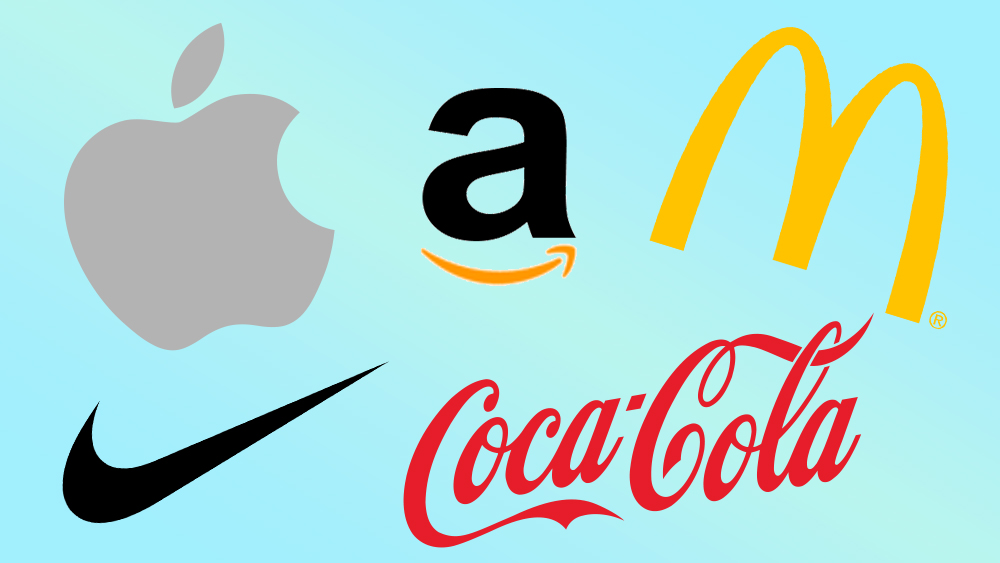
Big-brand logos are among the most recognised icons on the planet, up there with such universal symbols as traffic signs. It's hard to measure how much top company logos contributed to the brands becoming household names, or whether their logos are memorable because of their sheer ubiquity or because of features inherent in their design.
It's clear that a great company logo alone doesn't make a successful brand. There usually needs to be a killer product, constant innovation and a keen focus on beating rivals. Strong roots in communities, be they geographical or interest-based and an emotional connection to consumers that outlasts a single marketing campaign are also key.
But, aside from that, big-brand logos are the face of these companies: the most visual part of that identity, and they serve many purposes, today identifying brands across more channels and platforms than ever. There's no one winning formula. Some top company logos are textless logos and others are cursive logos, but they do share some characteristics while also representing each big brand's core proposition. Below we analyse 11 of the best big-brand logos and how they help communicate the brand's value (see our guide to how to design a logo for tips for your own work).
The best big-brand logos
01. Amazon logo

In 2023, Amazon is vying with Apple (see below) to be the world's most valuable brand after Apple (see below). One of the few massive success stories to survive the bursting of the dotcom bubble, it's become the world’s biggest retailer. And its company logo contributes to that value.
As part of its transition from an online book store, it brought in Turner Duckworth for a rebrand in 2000, in which it ditched its previous brand logo and tagline and introduced a design with a clever flourish: an arrow, linking the ‘a’ and ‘z’ in the brand name, while also forming a smile. This big brand logo perfectly encapsulated the message that Amazon now sold everything, not just books, while also creating a warm, friendly character, something that online stores struggle to match physical outlets for.
Core brand proposition: to be Earth's most customer-centric company, where customers can find and discover anything they might want to buy online.
How the logo reinforces it: the logo communicates that Amazon sells everything and anything, from A to Z, while the smile provides for an approachable identity, compensating for the lack of the human factor in e-commerce.
Daily design news, reviews, how-tos and more, as picked by the editors.
02. Disney

When it comes to appealing to children worldwide, nothing beats Disney. That appeal is, of course, largely based on its world-class content. But that’s not the whole story.
After all (whisper it), not every Disney film has been that great. And other studios, such as Dreamworks, have created movies and characters that are just as iconic as Disney’s best.
Yet rival brands have never come close to matching that indefinable feeling, that sense of wonder, that a trip to the Disney store – or even Disneyland itself – can evoke.
This branding brilliance is built on several keystones: The fairytale castle motif that gets sprinkled with stardust at the start of every movie; iconic tunes that every child knows the words to; that ever-adaptable mouse ears silhouette.
And right in the centre of it all is a friendly, smiling Disney logo, a sure sign that wondrous things are about to occur.
The fact that the logo is (supposedly) based on Walt Disney’s signature is crucial, because it forges a personal connection between the man who started it all and the present day audience. And that all ties in nicely with the ethos of family togetherness that the brand strives for.
Of course, Walt’s real signature was actually nothing like this logo, and Disney is as profit-hungry as any other mega-corporation. But none of that really matters when you have an audience that wants to believe in magic, and a brand that’s happy to indulge that wish.
Core brand proposition: Fun and magic for all the family.
How the logo reinforces it: A friendly signature from the “head of the Disney family”, cast in cartoony, fantastical lettering, conveys both a sense of fun and reassurance.
03. Coca-Cola logo
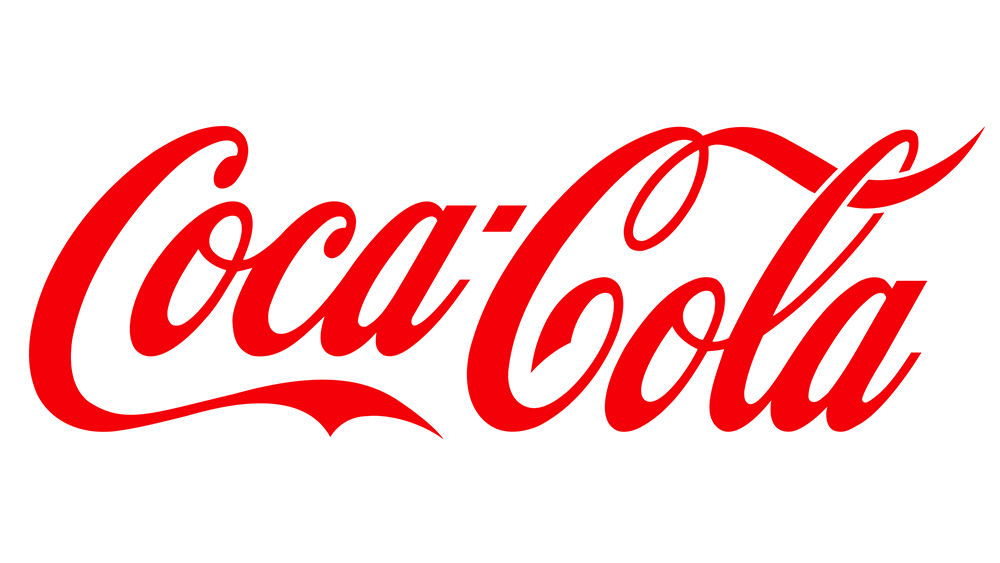
It’s hard to think of a big-brand logo that’s less likely to ever be redesigned. Surveys consistently show that it’s recognised by more than 90 per cent of people the world over.
One of the main reasons for the success of Coca-Cola’s logo is its sheer longevity. The original 1886 logo, written in Spencerian script, is so close to the current design that a time traveller from the Victorian era would easily recognise it today.
The simple lesson is that, rather than constantly updating and redesigning your logo as some brands feel compelled to do, you may well be better off sticking with what people know.
Because just as the more you hear a pop song, the more it lodges in your brain, so it is with logos. Familiarity, in this sphere, is less likely to breed contempt than instant recognition and its associated success. You can learn more in our Coca-Cola logo history.
Core brand proposition: The tastiest and most refreshing soda around.
How the logo reinforces it: Coca-Cola’s historical script evokes a feeling of longevity and trustworthiness, while its bright red colour adds a sense of youth, brightness and excitement.
04. McDonalds logo

The story of how salesman Ray Kroc took a restaurant called McDonald’s and turned it into a world-beating franchise – spending millions on buying the name, concept and store design from the original owners – is a fascinating and complex one. The best way to learn about is by watching the much underrated 2016 film The Founder, starring Michael Keaton.
But once you’ve discovered about all the Machiavellian plotting by Kroc, you still wonder: why didn’t he just start his own restaurant instead? The simple answer, as he told TIME, was: “I needed the McDonald name and those golden arches. What are you going to do with a name like Kroc?"
Those two elements were eventually combined in one brilliant logo design, which has become one of the most ubiquitous on the planet.
In fact, not only do people recognise the logo, they actively seek it out. Just think, if you were looking for a quick bite on a long trip, wouldn’t you (subconsciously or otherwise) be looking out for those distinctive golden arches?
Learn more about its history by reading our article on The story behind the McDonald's logo.
Core brand proposition: Good value, reliable, fast food.
How the logo reinforces it: The two arches invite you to a golden palace of calorific delight, while the ‘M’ for McDonalds conveys a reassuring sense of family and tradition.
05. Starbucks logo

If you’re looking for a caffeine fix in a modern city, you’re probably on the lookout for the Starbucks logo. This distinctive emblem does a great job in drawing millions of customers to pay more than they’d like for a coffee on a daily basis. But what exactly does it mean?
When Starbucks was founded in 1971, the Seattle-based company wanted its logo to combine the city’s strong seaport roots with the seafaring history of coffee. After examining a lot of old marine books, someone spotted a 16th century Norse woodcut of a twin-tailed mermaid, also known as a siren.
The idea of a seductress beckoning customers towards their caffeine high was irresistible, and she’s been there ever since. There may have been tweaks and updates to the logo itself, but as the company blog stated during the last tweak in 2015: “the Siren has always been there. She is at the heart of Starbucks.”
She makes a standout logo, alright – just don't ask people to draw it.
Core brand proposition: Good coffee in a convivial atmosphere.
How the logo reinforces it: The emblem provides a link to Seattle’s historic past, adding a sense of depth and tradition to the brand, while the siren herself silently speaks to your subconscious, tempting you with that caffeine hit you’ve been craving.
06. Playboy logo
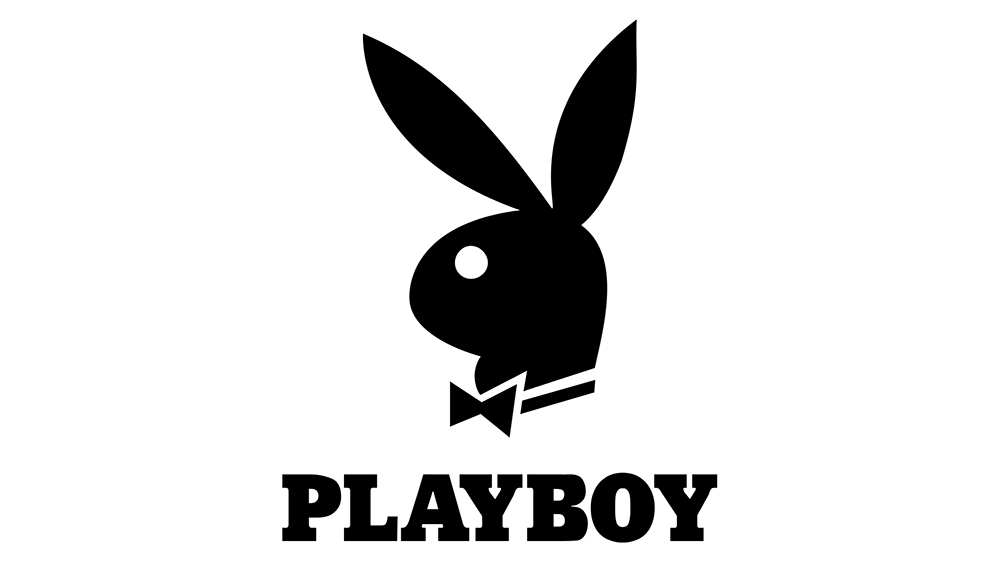
If ever a logo could claim to be a company’s most valuable asset, it’s that of Playboy. After all, few people buy the magazine it was once chiefly known for. And even its soft porn videos are no longer a licence to print money, now they’re competing with free porn on ad-supported websites.
Nowadays, the corporation earns the bulk of its revenue from licensing its logo, which was originally created in 1953 by Playboy art director Art Paul. An enduring symbol of both kitsch and sexual liberation, the rabbit in a tux adorns everything from clothing and beauty products to branded cocktail lounges such as LA’s Bar Fifty Three.
So it was no surprise when, shortly after founder Hugh Hefner’s recent death, Playboy’s top priority was taking legal steps to lock down ownership of the logo, or indeed any other version of it.
Core brand proposition: It’s fun and harmless for men to indulge their sexual fantasies.
How the logo reinforces it: The tongue-in-cheek rabbit emblem hints at sexual virility without being at all explicit or offensive, which means it can even be used in public, where children may see it.
07. Ford logo

As the company that pioneered the mass production of automobiles, Ford has a long history to trade on. And it makes the most of it. Evoking a sense of continuity and reliability is key to Ford’s branding, so it’s not surprising that its logo has changed little over the last century.
The original signature lettering appeared in 1909 (interestingly, rendered in the same Spencerian script used in the Coca-Cola logo) and was refined in 1912. It was encapsulated in the blue oval in 1927. The most recent update was carried out, thoughtfully and carefully, by the great designer Massimo Vignelli in 1966. And that, aside from a few tweaks, has been that.
The Ford logo is, then, another case of a big brand logo succeeding because the company stuck to its guns. Even when one of the legends of logo design, Paul Rand, designed a radical alternative in 1966, Henry Ford II, the owner at the time, turned it down.
And he was probably right. After all, the logo was one of the valuable assets pledged as collateral in the 2006 deal that gave Ford a much-needed multibillion-dollar line of credit.
Core brand proposition: Reliable, high quality motoring.
How the logo reinforces it: By carefully respecting its logo over the decades, Ford has protected the brand loyalty and emotional connections it has built up in generation after generation.
08. The BBC logo

The BBC has had an interesting and chequered logo history. But the logo we’re familiar with today – three letters, each encased in separate squares – has essentially been in place since 1960. And it works brilliantly because, well… it’s quite boring.
Since its launch in 1992, the BBC’s mission has remained to ‘inform, educate and entertain’. Most other TV channels focus on the ‘entertain’ part of that phrase. But it turns out that people aren’t as dumb as they’re sometimes suspected to be. And audiences around the world really appreciate the BBC’s focus on in-depth documentaries, balanced news, costume dramas, arts and culture.
So just as a channel like Fox News needs a dynamic and exciting logo to convey just how combative and game-changing its reporting is, the calmer and more measured approach taken by the BBC is reflected in a logo that’s more formal, geometric and, yes, just a little bit dull.
Core brand proposition: To inform, educate and entertain.
How the logo reinforces it: The BBC’s formal logo eschews flashy sales techniques and instead reflects the organisation’s sense of confidence in its mission.
09. The Shell logo

You can be sure of Shell, the old advertising slogan ran. And while oil and gas companies are no longer feted in the way they were in those pre-eco aware times, the classic Shell logo – relatively unchanged since 1971 – still speaks to the kind of longevity and reliability that people crave in an ever-changing world.
Reliability is, of course, what you want from your energy giant, not excitement or unnecessary risk-taking.
And the best thing about the Shell logo is that it provides us with that sense of traditionalism, even nostalgia, while at the same time its crisp minimalism means doesn’t look at all dated, almost five decades on from its creation.
But why the shell? The company’s name and emblem is surprisingly literal. Shell actually began life in 1891 as a trading company that transported old oriental sea shells to Western nations. But given that oil and gas essentially comes from dead animals and plant life, the emblem still makes sense in the context of its activities today.
The distinctive red and yellow colour scheme first appeared around 1915 and followed the construction of Shell’s first service stations in California.
The bright colours helped the logo stand out on the freeways, and they’re also the colours of the Spanish flag, which would have resonated with the state’s many Spanish settlers. It's no wonder it made it into our top 10 best logos ever.
Core brand proposition: An energy giant you can trust.
How the logo reinforces it: Bright colours and simple design make the logo easy to recognise, and its sheer longevity provides a sense of reassuring familiarity in a chaotic world.
10. The Nike logo
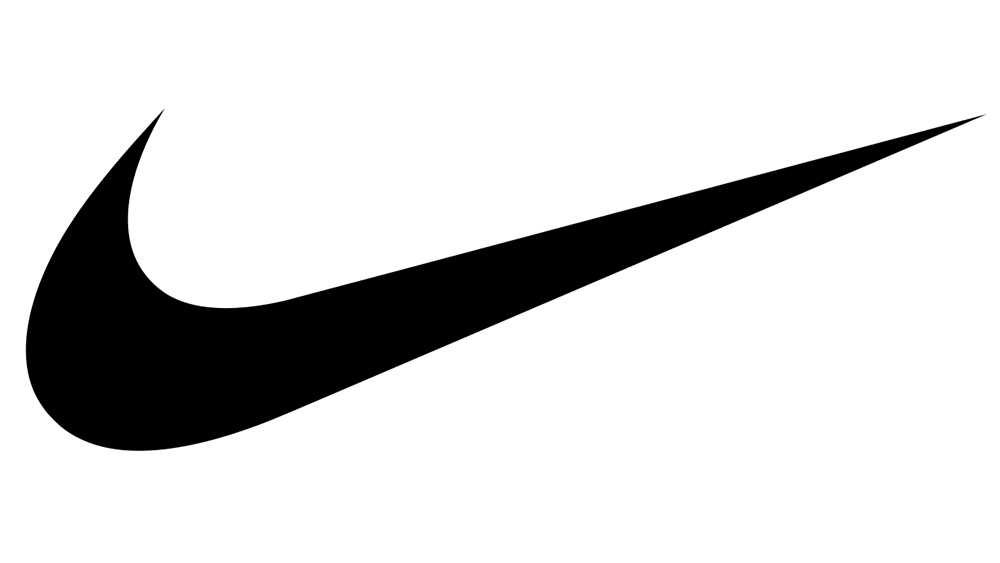
Sometimes the success of a design lies more in the final result than the original intention. Take the Nike logo, designed by Portland student Carolyn Davidson for the princely sum of $35.
The company’s founder, Philip Knight, wanted something to suggest movement, along the lines of the Adidas stripes. And so Davidson’s logo was actually drawn as the outline of the wing of the goddess Nike, to personify victory.
Of course, what the world saw, and continues to see, was what the Americans call a check and the British call a tick. More broadly, this now-ubiquitous logo has come to represent positivity, especially when paired in advertising campaigns with the all-encompassing slogan ‘Just do it’.
Owning both a punctuation mark and an emotional state of being: now that’s what we call a successful brand logo.
Core brand proposition: You, too, can achieve your sporting dreams and physical goals.
How the logo reinforces it: A simple emblem that speaks volumes about the power and appeal of positive thinking.
10. The Apple logo
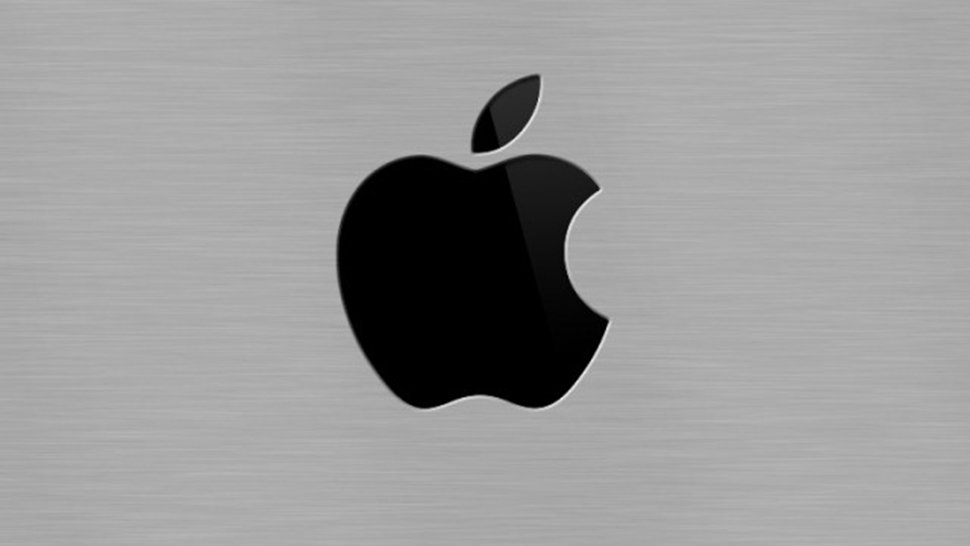
We couldn't finish our list of top company logos without mentioning the biggest big-brand logo of them all. Talk to hardcore Apple fans and they’ll tell you the success of the brand lies in the fact that its products “just work”. But many people have had issues trying to use their pricey iPhone as a phone, while others have found that a Chromebook could do everything they needed, without the huge cost of a MacBook.
It’s not all, in short, all about functionality. What’s equally important is that Apple has made the visual design of its products a priority. They are undeniably beautiful things. If cost were no longer an issue then few people, if they’re honest, would choose anything else.
While the Apple logo, designed by Rob Janoff, may play a small part in this overall aesthetic, it’s certainly an important one. Easy to spot at a distance on any Apple device, think how many times you’ve spotted it in a TV show, movie or just in your local coffee shop and felt a pang of envy (if you’re not an Apple user) or the thrill of belonging to an elite club (if you are).
In other words, the Apple logo is not just a quality trademark, it’s a fashion statement. And no other hardware company has yet come up with anything to rival it for sheer, unadulterated cool.
Core brand proposition: Apple is just the coolest. Nothing else comes close.
How the logo reinforces it: A simple, beautifully designed emblem that sets Apple apart as a fashion brand.
For more inspiration, see our pick of the best logos overall, the best 21st century logos and the best social media logos.

Tom May is an award-winning journalist specialising in art, design, photography and technology. His latest book, The 50 Greatest Designers (Arcturus Publishing), was published this June. He's also author of Great TED Talks: Creativity (Pavilion Books). Tom was previously editor of Professional Photography magazine, associate editor at Creative Bloq, and deputy editor at net magazine.
- Joe FoleyFreelance journalist and editor
